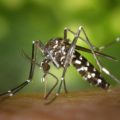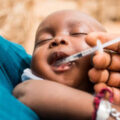Nigeria, a country located on the western coast of Africa. Nigeria has a diverse geography, with climates ranging from arid to humid equatorial. However, Nigeria’s most diverse feature is its people. Nigeria Centre for Disease Control (NCDC), is Nigeria’s leading national public health institute. The NCDC is a Nigerian federal government agency under the Federal Ministry of Health (Nigeria) and is headquartered in Abuja, Nigeria. The main goal of the agency is to protect public health and safety through the control and prevention of communicable diseases in Nigeria. The agency is also responsible for coordinating surveillance systems to collect, analyze and elucidate data gathered on diseases of importance to the Nigerian community.
The idea for the Nigeria Centre for Disease Control Agency was conceived in 2011 where some departments in the Federal Ministry of Health was moved to help setup the agency. The departments at that time were Epidemiology Division, the Avian Influenza Project and the Nigeria Field Epidemiology and Laboratory Training Programme. Epidemics and disease outbreaks are common in Nigeria largely due to poor sanitary conditions and low level of environmental health awareness.
The common types of diseases in Nigeria are;
Malaria
Malaria is a risk for 97% of Nigeria’s population. The remaining 3% of the population live in the malaria free highlands. There are an estimated 100 million malaria cases with over 300,000 deaths per year in Nigeria. Malaria is caused by Plasmodium parasites. The parasites are spread to people through the bites of infected female Anopheles mosquitoes, called “malaria vectors.” There are 5 parasite species that cause severe malaria in humans, and 2 of these species – P. falciparum and P. vivax – pose the greatest threat.
According to the World Health Organization, P. falciparum accounted for 99.7% of estimated malaria cases in the WHO African Region where Nigeria is located.
Symptoms
Malaria is an acute febrile illness. In a non-immune individual, symptoms usually appear 10–15 days after the infective mosquito bite. The first symptoms – fever, headache, and chills – may be mild and difficult to recognize as malaria. If not treated within 24 hours, P. falciparum malaria can progress to severe illness, often leading to death. Children with severe malaria frequently develop one or more of the following symptoms: severe anemia, respiratory distress in relation to metabolic acidosis, or cerebral malaria. In adults, multi-organ failure is also frequent. In malaria endemic areas, people may develop partial immunity, allowing asymptomatic infections to occur. SEE: Can I Take Malaria Drugs With Antibiotics?
Typhoid Fever
Typhoid Fever is a life-threatening infection caused by a virulent bacteria called Salmonella Typhi that is rare in the most developed countries but remains a serious health concern in developing countries including Nigeria with an incidence range of 3.9% to 18.6%. Access to safe water and adequate sanitation is important in preventing transmission. You can contract the infection if you eat food handled by someone with typhoid fever who hasn’t washed carefully after using the toilet. Typhoid fever spreads through contaminated food and water and occasionally through close contact with someone who’s infected.
Symptoms
Signs and symptoms are likely to develop gradually – often appearing one to three weeks after exposure to the disease.
Early stage symptoms can include: headache, fever, weakness & fatigue, muscle aches, sweating, dry cough, loss of appetite & weight loss, abdominal pain, diarrhoea or constipation, rashes and extremely swollen abdomen.
Lassa Fever
Lassa fever is endemic in Nigeria, and the annual peak of human cases is usually observed during the dry season (December–April) following the reproduction cycle of the Mastromy rats in the wet season (May – June). Given that 90-95% of human infections are due to indirect exposure to (through food or household items contaminated by infected rats’ urine and faeces) or direct contact with infected Mastromys rats, the very high density and high circulation of Lassa fever virus in young non-immune rat population during the wet season create a potential for further human infection, thus, the number of infections is expected to continue to rise until the end of the dry season.
Symptoms of Lassa fever
The onset of the disease, when it is symptomatic, is usually gradual, starting with fever, general weakness, and malaise. After a few days, headache, sore throat, muscle pain, chest pain, nausea, vomiting, diarrhoea, cough, and abdominal pain may follow.
Tuberculosis
Nigeria is ranked seventh among the 30 high TB burden countries and second in Africa. The problem of TB in Nigeria has been made worse by the issues of drug resistant TB and the HIV/AIDS epidemic. It is estimated that 407,000 people in Nigeria have TB each year. Tuberculosis (TB) is a potentially serious infectious disease that mainly affects your lungs. The bacteria that cause tuberculosis are spread from one person to another through tiny droplets released into the air via coughs and sneezes.
Symptoms of TB
A person with latent, or inactive, TB will have no symptoms. They may still have a TB infection, but the bacteria in your body is not yet causing harm. Symptoms of active TB include: A cough that lasts more than three weeks, loss of appetite and unintentional weight loss, fever, chills, and night sweats.
Cholera
In Nigeria, cholera is an endemic and seasonal disease, occurring annually mostly during the rainy season and more often in areas with poor sanitation, with the first series of cholera outbreaks reported between 1970 and 1990. Major epidemics also occurred in 1992, 1995-1996, 1997 and several epidemics and outbreaks continue to occur yearly. Cholera is an extremely virulent disease that can cause severe acute watery diarrhoea. It takes between 12 hours and 5 days for a person to show symptoms after ingesting contaminated food or water. Cholera affects both children and adults and can kill within hours if untreated.
Symptoms
Approximately one in ten (5-10%) of infected persons will have severe cholera which in the early stages includes: profuse watery diarrhea, sometimes described as “rice-water stools,” vomiting, rapid heart rate, loss of skin elasticity, dry mucous membranes, low blood pressure, thirst, muscle cramps and restlessness or irritability.
Meningitis
Meningitis is an epidemic prone disease for immediate notification on the IDSR platform in Nigeria. Cases can occur throughout the year, with epidemics occurring during the dry season. For example in 1996, N. meningitidis sero-group A killed 11,717 of the 109,580 recorded cases, with subsequent epidemics in 2003, 2008, and 2009. Meningitis is an inflammation of the meninges, a thin layer of the connective tissue that covers the brain and the spinal cord. If due to an infection, this inflammation can be caused by a variety of organisms – bacteria, viruses, parasites or fungi.
Three predominant bacteria are responsible for more than 70% of bacterial meningitis cases: Neisseria meningitidis, Haemophilus influenzae b (Hib) and Streptococcus pneumoniae. Neisseria meningitidis has the potential to cause large epidemics.
Symptoms
The most common signs and symptoms are fever, headache, nausea and vomiting, photophobia (pain on looking at bright lights), neck stiffness, and altered conscious levels. In younger children it may be more difficult to observe these signs, and irritability, poor feeding, and inactivity are common. N. meningitidis can also cause meningococcal septicemia, presenting with fatigue, severe myalgia (muscle pain), vomiting, cold extremities, rapid breathing, low blood pressure, and a purpuric (dark purple non-blanching) rash.
Guinea Worm Disease
Guinea Worm Disease (also known as Dracunculiasis) is a parasitic infection caused by a long thread like worm, Dracunculiasis medinensis. The worm is about 1-2 millimeters wide; female worm measures about 60 to 100 centimeters, with the adult male worm being a few centimeters shorter. The disease has been in existence since ancient times. The word “Dracunculiasis” is of Latin origin which means “affliction with little dragons”. In 1986, there was an estimated 3.5 million cases in parts of Africa, Asia and the Middle East.
Symptoms
Symptoms of the disease like swelling of the feet, itching and blister formation are usually experienced by infected individuals. This occurs 10-14 months after the person has been infected. It is then followed by the emergence of the guinea worm from the blisters formed (on the feet, in most cases). Other symptoms may include fever, nausea and vomiting as well as allergic reaction from migration of the female adult worm from the deep tissue to the skin.
Yellow fever
Yellow fever is an acute viral hemorrhagic illness caused by the yellow fever virus, an RNA virus that belongs to the family Flaviviridae. The virus is found in tropical and subtropical areas of Africa and Central/South America with the illness being endemic in 34 African countries including Nigeria.
Symptoms
Following infection, the virus incubates in the body for three to six days. Many people do not experience symptoms but when these occur they vary from very mild, nonspecific, febrile illness to a fulminating, sometimes fatal disease. The clinical symptoms associated with the early stages of infection are indistinguishable from those of influenza or malaria, mainly fever, muscle pain with prominent backache, headache, loss of appetite, and nausea or vomiting. In most cases, symptoms disappear after 3 to 4 days.
HIV/AIDS
Nigeria has the second largest HIV epidemic in the world. Although HIV prevalence among adults is much less (1.5%) than other sub-Saharan African countries such as South Africa (20.4%) and Zambia (11.3%), the size of Nigeria’s population means 1.9 million people were living with HIV in 2018. Recent drops in prevalence estimates for the country has been attributed to better surveillance.
Symptoms
The fever, usually one of the first symptoms of HIV, is often accompanied by other mild symptoms, such as fatigue, swollen lymph glands, and a sore throat. At this point the virus is moving into the blood stream and starting to replicate in large numbers.





